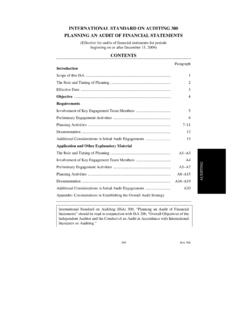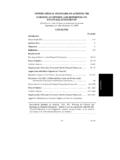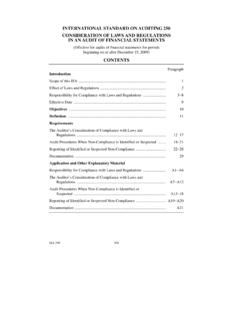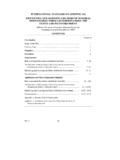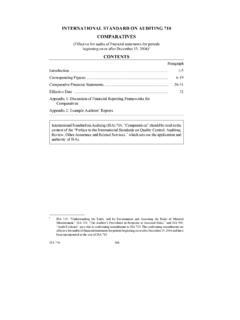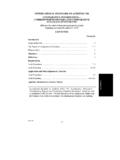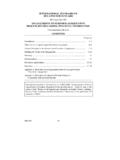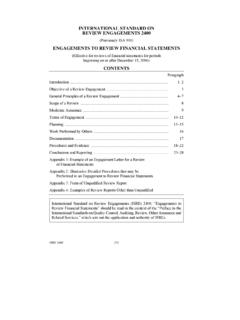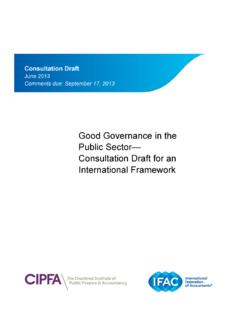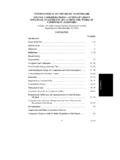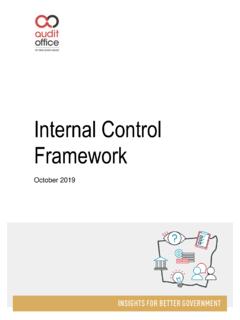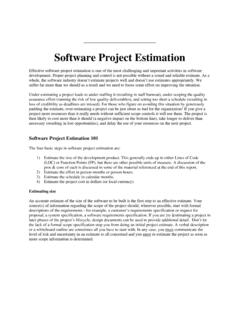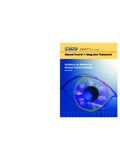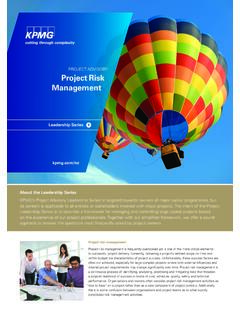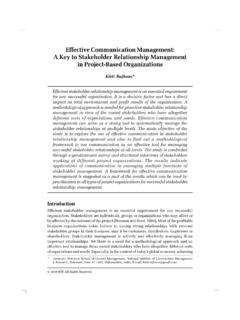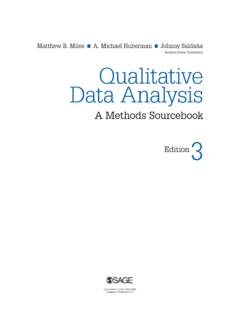Transcription of International Standard on Auditing Audit Sampling
1 International Auditing and Assurance standards Board ISA 530 April 2009 International Standard on Auditing Audit Sampling 1 International Auditing and Assurance standards Board International Federation of Accountants 545 Fifth Avenue, 14th Floor New York, New York 10017 USA This International Standard on Auditing (ISA) 530, Audit Sampling was prepared by the International Auditing and Assurance standards Board (IAASB), an independent Standard -setting body within the International Federation of Accountants (IFAC). The objective of the IAASB is to serve the public interest by setting high quality Auditing and assurance standards and by facilitating the convergence of International and national standards , thereby enhancing the quality and uniformity of practice throughout the world and strengthening public confidence in the global Auditing and assurance profession.
2 This publication may be downloaded free of charge from the IFAC website: The approved text is published in the English language. The mission of IFAC is to serve the public interest, strengthen the worldwide accountancy profession and contribute to the development of strong International economies by establishing and promoting adherence to high quality professional standards , furthering the International convergence of such standards and speaking out on public interest issues where the profession s expertise is most relevant. Copyright April 2009 by the International Federation of Accountants (IFAC). All rights reserved.
3 Permission is granted to make copies of this work provided that such copies are for use in academic classrooms or for personal use and are not sold or disseminated and provided that each copy bears the following credit line: Copyright April 2009 by the International Federation of Accountants (IFAC). All rights reserved. Used with permission of IFAC. Contact for permission to reproduce, store or transmit this document. Otherwise, written permission from IFAC is required to reproduce, store or transmit, or to make other similar uses of, this document, except as permitted by law. Contact ISBN: 978-1-60815-016-8 2 International Standard ON Auditing 530 Audit Sampling ( effective for audits of financial statements for periods beginning on or after December 15, 2009) CONTENTS Paragraph Introduction Scope of this ISA.
4 1 2 effective Date .. 3 Objective .. 4 Definitions .. 5 Requirements Sample Design, Size and Selection of Items for Testing .. 6 8 Performing Audit Procedures .. 9 11 Nature and Cause of Deviations and Misstatements .. 12 13 Projecting Misstatements .. 14 Evaluating Results of Audit Sampling .. 15 Application and Other Explanatory Material Definitions .. A1 A3 Sample Design, Size and Selection of Items for Testing .. A4 A13 Performing Audit Procedures .. A14 A16 Nature and Cause of Deviations and Misstatements .. A17 Projecting Misstatements .. A18 A20 Evaluating Results of Audit Sampling .. A21 A23 Appendix 1: Stratification and Value-Weighted Selection Appendix 2: Examples of Factors Influencing Sample Size for Tests of Controls Appendix 3: Examples of Factors Influencing Sample Size for Tests of Details Appendix 4: Sample Selection Methods Audit Sampling 3 International Standard on Auditing (ISA) 530, Audit Sampling should be read in conjunction with ISA 200, Overall Objectives of the Independent Auditor and the Conduct of an Audit in Accordance with International standards on Auditing .
5 Audit Sampling 4 Introduction Scope of this ISA 1. This International Standard on Auditing (ISA) applies when the auditor has decided to use Audit Sampling in performing Audit procedures. It deals with the auditor s use of statistical and non-statistical Sampling when designing and selecting the Audit sample, performing tests of controls and tests of details, and evaluating the results from the sample. 2. This ISA complements ISA 500,1 which deals with the auditor s responsibility to design and perform Audit procedures to obtain sufficient appropriate Audit evidence to be able to draw reasonable conclusions on which to base the auditor s opinion.
6 ISA 500 provides guidance on the means available to the auditor for selecting items for testing, of which Audit Sampling is one means. effective Date 3. This ISA is effective for audits of financial statements for periods beginning on or after December 15, 2009. Objective 4. The objective of the auditor, when using Audit Sampling , is to provide a reasonable basis for the auditor to draw conclusions about the population from which the sample is selected. Definitions 5. For purposes of the ISAs, the following terms have the meanings attributed below: (a) Audit Sampling ( Sampling ) The application of Audit procedures to less than 100% of items within a population of Audit relevance such that all Sampling units have a chance of selection in order to provide the auditor with a reasonable basis on which to draw conclusions about the entire population.
7 (b) Population The entire set of data from which a sample is selected and about which the auditor wishes to draw conclusions. (c) Sampling risk The risk that the auditor s conclusion based on a sample may be different from the conclusion if the entire population were subjected to the same Audit procedure. Sampling risk can lead to two types of erroneous conclusions: (i) In the case of a test of controls, that controls are more effective than they actually are, or in the case of a test of 1 ISA 500, Audit Evidence. Audit Sampling 5details, that a material misstatement does not exist when in fact it does.
8 The auditor is primarily concerned with this type of erroneous conclusion because it affects Audit effectiveness and is more likely to lead to an inappropriate Audit opinion. (ii) In the case of a test of controls, that controls are less effective than they actually are, or in the case of a test of details, that a material misstatement exists when in fact it does not. This type of erroneous conclusion affects Audit efficiency as it would usually lead to additional work to establish that initial conclusions were incorrect. (d) Non- Sampling risk The risk that the auditor reaches an erroneous conclusion for any reason not related to Sampling risk.
9 (Ref: Para A1) (e) Anomaly A misstatement or deviation that is demonstrably not representative of misstatements or deviations in a population. (f) Sampling unit The individual items constituting a population. (Ref: Para A2) (g) Statistical Sampling An approach to Sampling that has the following characteristics: (i) Random selection of the sample items; and (ii) The use of probability theory to evaluate sample results, including measurement of Sampling risk. A Sampling approach that does not have characteristics (i) and (ii) is considered non-statistical Sampling . (h) Stratification The process of dividing a population into sub-populations, each of which is a group of Sampling units which have similar characteristics (often monetary value).
10 (i) Tolerable misstatement A monetary amount set by the auditor in respect of which the auditor seeks to obtain an appropriate level of assurance that the monetary amount set by the auditor is not exceeded by the actual misstatement in the population. (Ref: Para A3) (j) Tolerable rate of deviation A rate of deviation from prescribed internal control procedures set by the auditor in respect of which the auditor seeks to obtain an appropriate level of assurance that the rate of deviation set by the auditor is not exceeded by the actual rate of deviation in the population. Audit Sampling 6 Requirements Sample Design, Size and Selection of Items for Testing 6.
